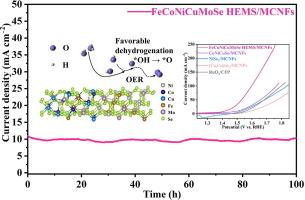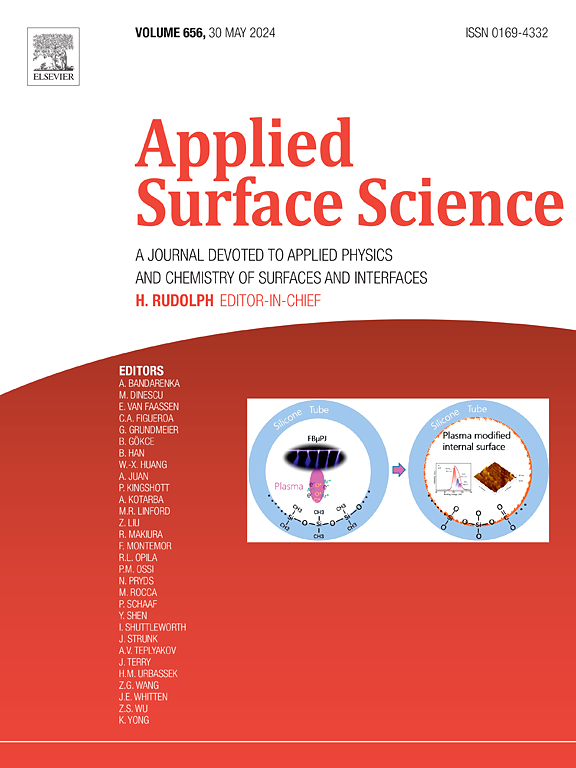High-entropy heterostructure electrocatalyst with built-in electric field regulation for efficient oxygen evolution reaction
IF 6.3
2区 材料科学
Q2 CHEMISTRY, PHYSICAL
引用次数: 0
Abstract
Space-charge transfer is an effective strategy to enhance electrocatalytic activity by modulating the surface electron density of catalysts. Herein, a multichannel carbon nanofibers–supported FeCoNiCuMoSe high-entropy metal selenide heterojunction catalyst was designed to achieve an efficient electrocatalytic oxygen evolution reaction (OER). This catalyst uses the work function difference between NiSe2 and (Co,Cu)Se2 to induce a built-in electric field at the interface, which effectively promotes interfacial charge transfer and subsequently regulates the adsorption/desorption of oxygen-containing intermediates. Furthermore, constructing a high-entropy system and synergistic interactions between multiple elements accelerate the OER kinetics. In an alkaline electrolyte, the electrocatalyst exhibits excellent performance, requiring an overpotential of 187 mV to achieve a current density of 10 mA cm−2 and maintaining excellent stability for at least 100 h without noticeable degradation. Herein, a novel perspective on the rational design of high-performance multiphasic electrocatalysts is presented, and robust technical support is provided for efficient and durable electrocatalytic OER.

求助全文
约1分钟内获得全文
求助全文
来源期刊

Applied Surface Science
工程技术-材料科学:膜
CiteScore
12.50
自引率
7.50%
发文量
3393
审稿时长
67 days
期刊介绍:
Applied Surface Science covers topics contributing to a better understanding of surfaces, interfaces, nanostructures and their applications. The journal is concerned with scientific research on the atomic and molecular level of material properties determined with specific surface analytical techniques and/or computational methods, as well as the processing of such structures.
 求助内容:
求助内容: 应助结果提醒方式:
应助结果提醒方式:


